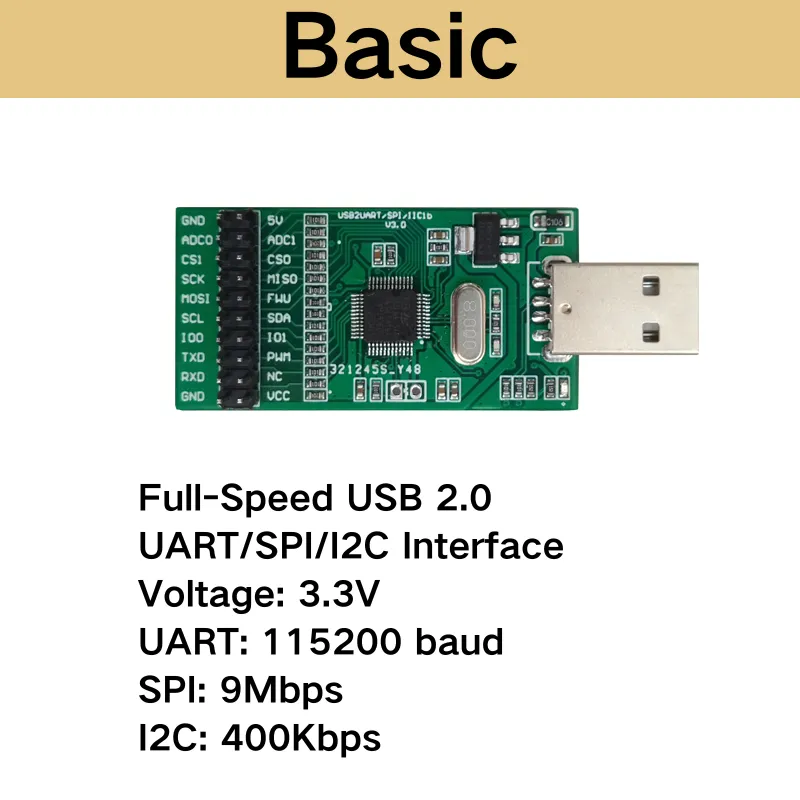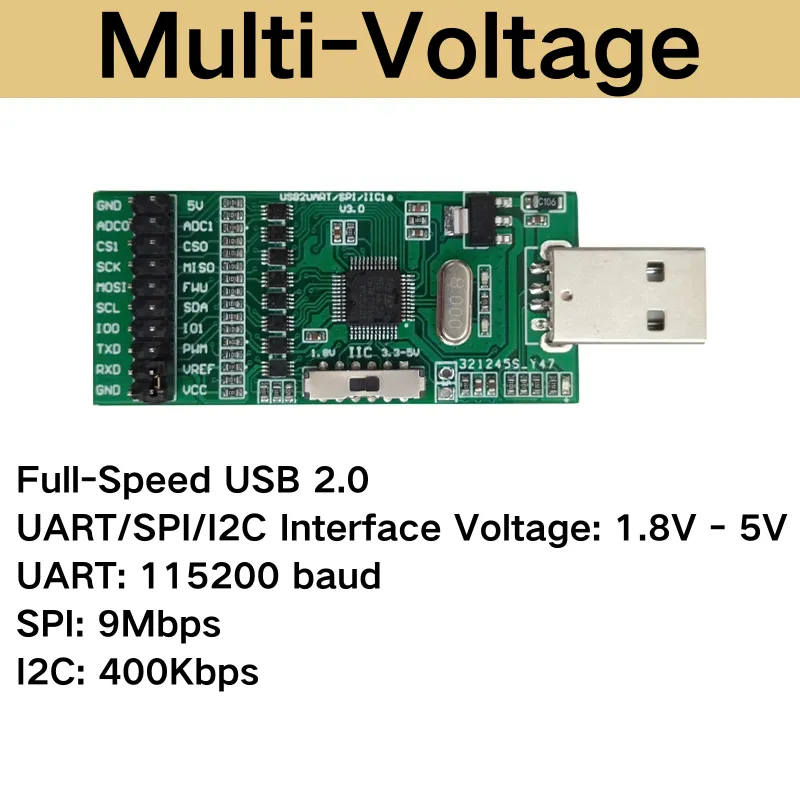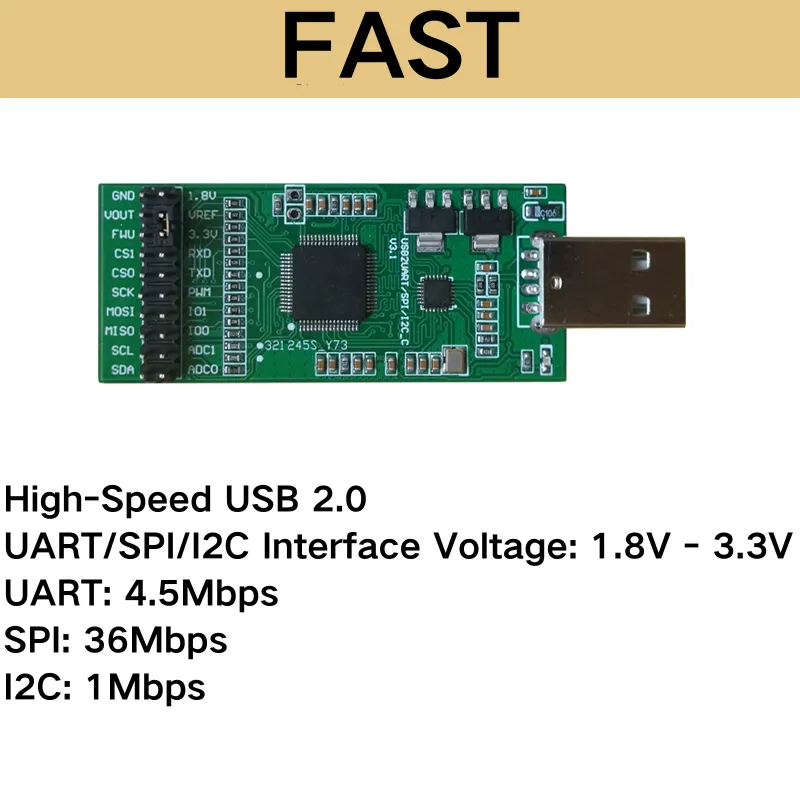The USB to UART, SPI, IIC Converter is a versatile communication module that supports multiple interfaces, including UART, SPI, IIC, IO, PWM, and ADC. It features USB composite device functionality with BULK and CDC support and is compatible with both Windows and Linux systems for secondary development. The module supports full-duplex UART, master/slave SPI, and master/slave IIC modes with flexible frequency and baud rate settings. It also allows for USB firmware updates, making it ideal for various embedded and IoT applications.
Features:
- Multiple Interface Support: Converts USB to UART, SPI, IIC, IO, PWM, and ADC.
- USB Composite Device: Supports BULK and CDC protocols for flexible communication.
- Windows/Linux Development: Easily customizable for both platforms with secondary development support.
- Full-Duplex UART: Supports UART full-duplex communication with adjustable baud rates.
- Basic Version: 2400-115200 bps
- Multi-Voltage Version: 2400-115200 bps
- Fast Version: 2400-4.5 Mbps
- SPI & IIC Master/Slave Modes:
- SPI: Master and slave modes, data transmission in both modes, configurable CS pin.
- IIC: Supports 7-bit and 10-bit addressing, and both master and slave modes with data transmission.
- PWM & ADC: Provides one PWM output and two ADC inputs for additional control and measurement.
- USB Firmware Update: Firmware can be updated via USB for added flexibility.
- Frequency Range:
- SPI: Up to 36 MHz (fast version).
- IIC: Up to 1 MHz (fast version).
- Customizable Settings: Supports various configurations like baud rates, parity, and stop bits for UART, and configurable frequencies for SPI and IIC.
Applications:
- Embedded Systems Development: Ideal for interfacing with microcontrollers, sensors, and other embedded devices.
- IoT Projects: Suitable for IoT devices that require multiple communication interfaces.
- Prototyping and Debugging: Perfect for prototyping and debugging embedded systems with various communication protocols.
- Data Acquisition and Control: Useful in projects where PWM control, ADC input, and serial communication are required.
- Secondary Development: Allows for customization and development on both Windows and Linux platforms.
- Industrial Automation: Can be used to connect multiple devices in industrial control systems, offering a flexible interface for various sensors and actuators.





Reviews
There are no reviews yet.